#Jewelry History
Text

Tiffany & Co, This Art Nouveau glorious peacock brooch with diamonds, sapphires, emeralds and black opals was inspired by a design from the Tiffany Archives. Tiffany craftsmen created it using plique á jour, an enameling technique that allows light to shine through the enamel creating a stained-glass window effect.
#tiffany#tiffany and co#timeless#art nouveau#art nouveau design#jewelry history#styøe#opals#sapphires#diamonds#brooch#plique-a-jour#art#bijoux#fashion#peacock#birds#feathers#blue#turquise#emeralds#classic tiffany#timeless tiffany#tiffany brooch#Tiffany & Co
164 notes
·
View notes
Text
And then there’s podcast invites.
My manifestations for creative collaborations have also been fruuuuitful like whoa. A podcast just hit me up about being a guest and discussing dream symbolism/ancestry work.
Eek!
Always down to share wisdom in new ways.
Feel like things are really coming together! Hope you guys are finding similar flows - keep me posted on your magic happenings too. We all radiate more together 💖

#podcast#marketing#follow#self healing#digital art#art#jewelry aesthetic#pastel goth#purple hair#cute art#cute bunny#self esteem#goth#jewelryporn#jewelry history#jewlelry#pink hair girl#purple hair girl#tattoed girls#demon girl#glasses girl#inked girls#punk girl#cute girls#nerdy babe#thicc babe#thick babe#big tiddy baby#hot babygirl#cute gurl
8 notes
·
View notes
Text
While I am pretty sure charm bracelets existed before 1927 (Queen Victoria is said to have been fond of giving them as gifts), the girly fashions reporter for Judge magazine seems to rather endearingly only have discovered them in the September 17th 1927 column.
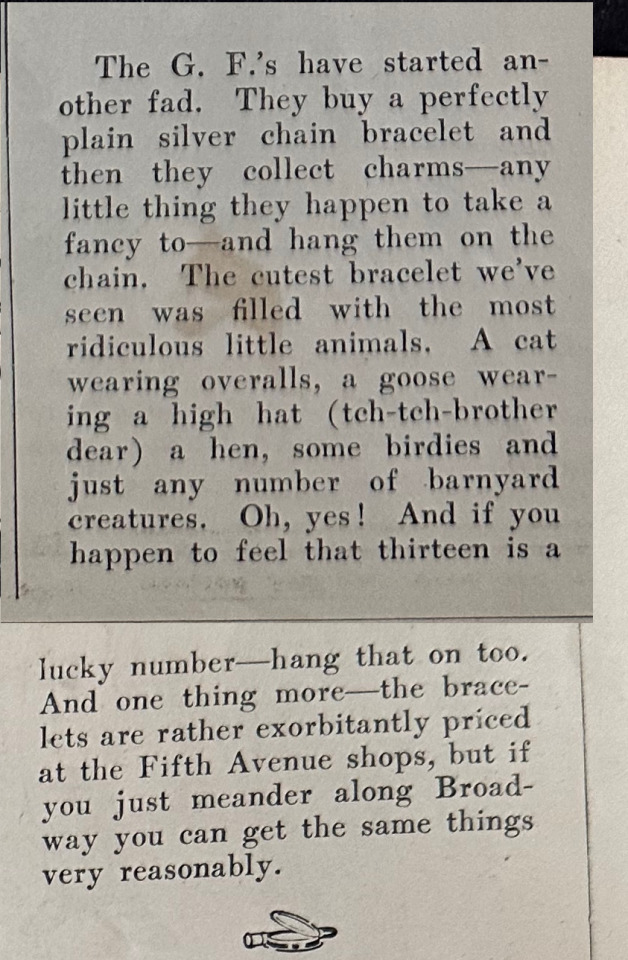
La Vie Parisienne seems to have existed to publish alternately and often simultaneously lascivious and critical cartoons about young ladies and to cluck over them judgementally, but one takes what sources one can find. Anyway, in this 1927 cartoon the young lady on the right appears to be wearing a charm bracelet as part of her dancing ensemble.
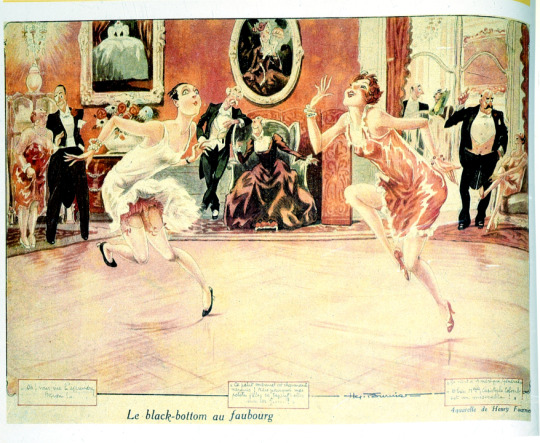
5 notes
·
View notes
Text
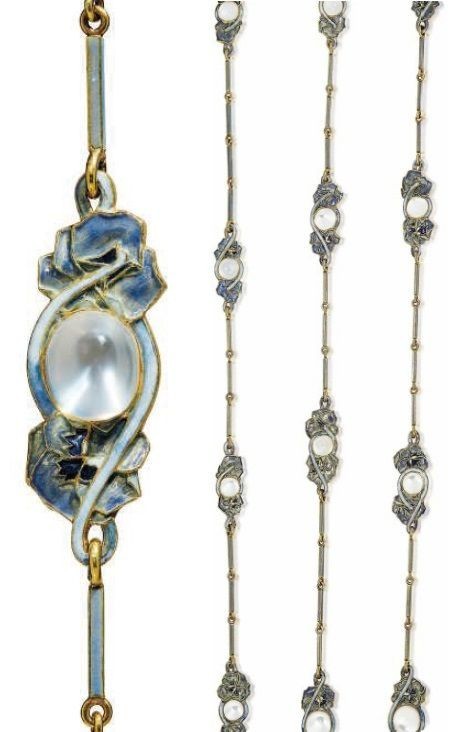
An Art Nouveau moonstone and enamel sautoir
By René Lalique
1902-1904
21 notes
·
View notes
Text
A 𝑆𝑒𝑟𝑑𝑜𝑢𝑘 pendant from Tangier, Morocco, 20th century. Ancient eagle-shaped necklace symbolizing strength, prestige made of gold and precious stones.

#morocco#moroccan#jewellery#jewels#jewel#jewerly#gold jewelry#jewelry history#moroccan culture#moroccan history#moroccan fashion#moroccan designers#mrooccan design#moroccan art#moroccan aesthetic#north africa#moorish#moors#middle-east#mediteranean#jewelry design#jewellery history#fashion history#ethnic#moroccan clothing#moroccan costumes#moroccan wears#history of fashion#menswear#womenswear
8 notes
·
View notes
Text
The Cultural Significance of Jewelry Across Societies
https://www.wjdexclusives.com/blog/the-cultural-significance-of-jewelry-across-societies/
The Cultural Significance of Jewelry Across Societies

Jewelry is more than just a decorative accessory; it is a powerful symbol of cultural identity, status, and heritage that varies significantly across different societies around the world. From the intricate beadwork of African tribes to the sophisticated gold craftsmanship of ancient Indian civilizations, jewelry serves as a silent storyteller, conveying centuries of tradition, values, and social norms.
Historical Roots and Cultural Connections
In many cultures, jewelry is deeply intertwined with history and tradition. For instance, in ancient Egypt, both men and women adorned themselves with elaborate jewelry made from precious metals and stones, believing it to offer protection and convey their status. The pharaohs and high-ranking officials wore extensive amounts of jewelry, which also played a role in their burial rituals, intended to prepare them for the afterlife.
Similarly, Native American jewelry, particularly pieces crafted by tribes such as the Navajo and Zuni, often incorporates elements like turquoise, which is not only beautiful but is also thought to hold protective and healing properties. The designs often include symbols that represent various spiritual beliefs, tribal stories, and connections to the natural world.
Jewelry as a Symbol of Status and Wealth
In many societies, jewelry also signifies social and economic status. The materials used, such as diamonds, gold, and other precious stones, often represent wealth and power. In Victorian England, for example, jewelry was an indicator of social standing and personal wealth, with mourning jewelry becoming a widespread tradition to show respect and remembrance for the deceased.
Today, this tradition continues in various forms across the world. In modern Western societies, engagement rings and wedding bands, often diamonds set in gold or platinum, are used to signify marital commitment. These pieces are cherished, not only for their aesthetic appeal but for their representation of love and commitment.
Cultural Diversity in Design
Our fine jewelry brand from NYC celebrates this rich diversity of jewelry traditions by offering a collection that includes over 6,000 styles. Each piece is crafted with a nod to the cultural significances that jewelry holds globally. From elaborate filigree work reminiscent of Middle Eastern artistry to minimalist designs that echo Scandinavian simplicity, our collection is a testament to the varied ways that cultures around the world celebrate through adornment.
Craftsmanship and Authenticity
We take pride in our craftsmanship, ensuring that each piece not only reflects the beauty and precision of fine jewelry making but also respects the cultural heritage it represents. Our artisans, skilled in techniques both traditional and modern, work to bring a piece of the world’s rich cultural tapestry to our customers.
Engagement with Cultural Traditions
By incorporating elements from various cultures into our jewelry designs, we also aim to foster a deeper appreciation and understanding among our customers. Jewelry is a wonderful way to connect with another culture's history and values, offering wearers a piece of the world’s interconnected stories.
Conclusion
At our brand, we believe that jewelry is much more than an accessory. It is a celebration of cultural diversity, a marker of personal and societal identity, and a bearer of tradition and history. We invite you to explore our extensive collection, where each piece tells a unique story of cultural significance, crafted with respect and reverence for the traditions that it represents.
Browse our globally-inspired collections and discover how you can wear and celebrate the rich tapestry of cultural jewelry traditions from around the world. Each piece is not just a part of your style, but a part of history, ready to be cherished and shared.
#Artisan Craftsmanship#Cultural Heritage#Cultural Jewelry#Fine Jewelry#Global Jewelry Styles#Jewelry as Art Form#Jewelry Design#Jewelry History#Symbolic Jewelry#Traditional Jewelry
0 notes
Text
Impostor Jewelry - Mistaken Gemstones in History
Gemstones of all kinds have been around since antiquity, see any of my Jewelry History or Birthstone blog posts as examples. However, the scientific process to positively identify these gemstones has only been around in the last 100 years. In this respect, there are at least a few famous jewels that were previously mistaken for another gemstone. Below are a few that I found while researching for…

View On WordPress
0 notes
Text
instagram
Ancient history jewelry.
Byzantine Empire era earring history.
Jewelry Maker and Goldsmith: Melise | Moon Honey Jewelry
#handmade#handcrafted#jewelry#earrings#goldsmith#gold#byzantine empire#jewelry making#jewelry maker#history#jewelry history#Instagram
1 note
·
View note
Text
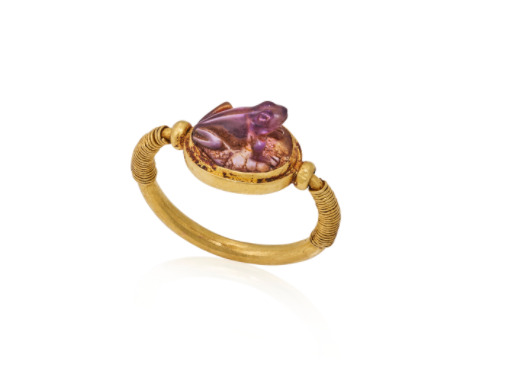
Gold swivel ring with amethyst frog, Egypt, New Kingdom, 1550-1229 BC
from Christies
11K notes
·
View notes
Text
Jewelry, War, and Power in the 21st Century
The 21st Century as it relates to jewelry: smuggling, gifts, repatriation, growth, theft, war, and colonialism. Get the popcorn!
As long as we have had history, we have had jewelry. Historically jewelry was used as a tool and it remains so in the 21st Century. In the international sphere, jewelry can be a welcoming gift, a statement of solidarity, a bribe, or a plea. Jewelry is also a convenient way to transfer, exchange, and carry wealth.
In times of war, jewelry is an asset that governments can gain or lose.
In October…
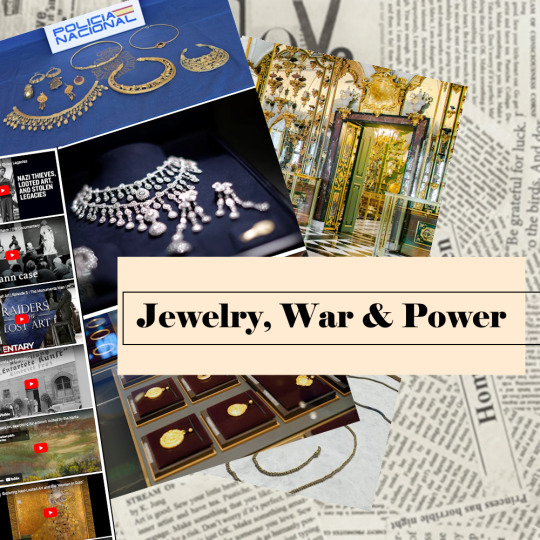
View On WordPress
0 notes
Text
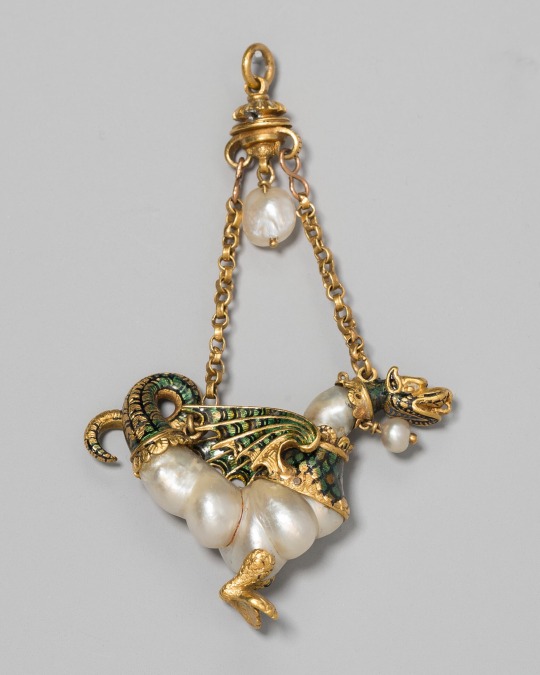
Pendant Shaped as a Dragon
1575-1600
Spain
Art Institute of Chicago
#16th century art#1500s#art history#antiquities#spanish jewelry#antique jewelry#jewelry#pendant#dragon#dragons#spanish art#Pearl#frostedmagnolias#dragon art
1K notes
·
View notes
Text


Brooch
Marcus & Co. (New York City, New York)
c.1900
This exquisite brooch is one of the few extant examples of plique-à-jour jewelry made by the New York firm of Marcus & Co., whose reputation at its prime rivaled that of Tiffany & Co. Herman Marcus (1828–99), a German–born and Dresden–trained jeweler, arrived in New York in 1850 and worked for a number of prestigious firms before establishing Marcus & Co. in 1892. Following his death, the company continued under the direction of his two sons, George Elder Marcus and William Marcus.
The brooch is a superb example of Marcus & Co.’s work in plique-à-jour enameling, in which the "cells" of color have no backing, allowing light to shine through the transparent enamel, thereby creating the effect of stained glass. One of the only jewelry firms of its day to succeed at this challenging technique, Marcus & Co. followed the lead of such innovative French designers as René Lalique. The sensitive 3-dimensional sculpting of the sweet pea blossoms and leaves, as well as the naturalistic coloring of the enamels, reflects the Art Nouveau aesthetic that prevailed at the turn of the century. Indeed, close parallels can be drawn with the brilliant naturalistic work of Louis Comfort Tiffany, whose oeuvre is so well represented in the Met’s collection.
The MET (Accession Number: Accession Number: 2016.107)
#brooch#jewelry#art nouveau#art history#1900s#turn of the century#fashion history#historical fashion#marcus and co#united states#floral#green#pink#enamel#pearl#diamond#gold#the met#images are pretty big HIGHLY recommend opening in a new tab
1K notes
·
View notes
Text

Stumbled on a trippy orb at the antique spot, and I'm like, "Whoa, this thing's packin' some serious goddess vibes!" 🔮 Crafted with oracle magic, mother of pearl, and hand-carved floral motif. Bail's silver-plated, obvi. 💅
#mother of pearl#pearlescentmoon#pearl fey#hand carved#pendant necklace#shell pendant#shell#self healing#jewelry aesthetic#jewelry history#jewelryporn
1 note
·
View note
Text
Edwardian "Miss Jessica Waters" Photo Locket

Jessica Waters was a theatre actress active during the early years of the 20th century. There's little information about her online, but judging by these pieces she must have been quite famous in her day, touring the old theatres and music halls of England (and who knows, maybe further afield). There's a snippet in The Cambria Daily Leader: "GRAND THEATRE SWANSEA. MONDAY, DECEMBER 7th, 1914, For Six Nights at 7.30. Visit of Miss Jessica Waters, supported by the No. 1 London Company. Monday, Tuesday, and Wednesday- MARY GOES FIRST. r Thursday, Friday, and Saturday- THE DUST OF EGYPT." And a couple of mentions in the Oxford Journal Illustrated newspaper. Again in 'The Dust of Egypt' (this time in October 1912) and in 1909 as "Actress at New Theatre".
The play - The Dust of Egypt - that Miss Waters starred in again and again was written by Alan Campbell, and seems to have been something of a sensation in its day. From the Eastbourne Chronicle, December 19th 1914:
MISS JESSICA WATERS and Company In the Laughter-making Farce,
'The Dust o f Egypt.'
By Alan Campbell.
In 1913 it was staged in Los Angeles, as documented in the ^Los Angeles Herald 20th March 1913: "BEGINNING NEXT SUNDAY AFTERNOON—FIRST PRODUCTION IN AMERICA. The Morocco Producing company will give the first American production of Alan Campbell's new comedy success. ‘The Dust of Egypt” NOW THE REIGNING LAUGHING SENSATION OF THE LONDON STAGE." And it appears to have been made into a movie in 1915 - directed by George D. Baker. imdb.com describes the film as, "An imperious Egyptian princess awakes from a 3000-year trance and wreaks comic havoc in the modern world, but it all turns out to be the dream of a young man, inspired by a mummy left in his care overnight." Wild, no doubt.
#antiquejewelry#antique pendant#miss jessica waters#the dust of egypt#edwardian#edwardianjewelry#butterlaneantiques#jewelry history
1 note
·
View note
Text
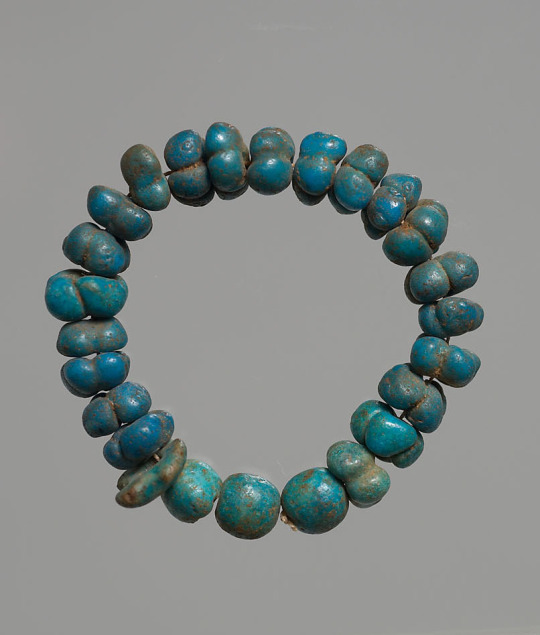

~ Bracelet.
Culture: Egyptian
Period: Middle Kingdom; 12th Dynasty
Date: ca. 1900 B.C.
Place of origin: El-Kubanija North, grave 15 l 1, (Grave of a girl)
Medium: Faience, blue-green
#ancient#ancient art#history#museum#archeology#ancient egypt#ancient history#archaeology#ancient jewelry#egypt#egyptian#bracelet#12th Dynasty#middle kingdom#El-Kubanija#grave of a girl#ca. 1900 b.c.
2K notes
·
View notes
Text

Gold posey ring inscribed "My Heart You Have/ And Yours I Crave" English, 17th-18th century
from Timeline Auctions
12K notes
·
View notes